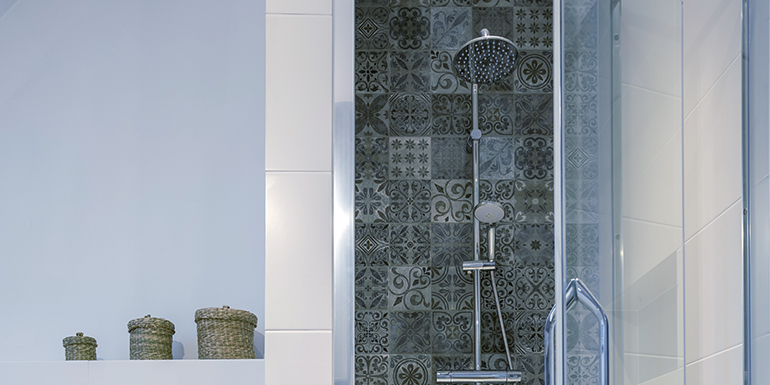How to Increase Water Pressure in Shower
There's nothing quite as invigorating as taking a strong and powerful shower to start your day or ease away stress after an exhausting one. Unfortunately, low water pressure can render even this soothing ritual an irritating dribble instead. Various factors may cause low water pressure; fortunately, however, there are ways you can increase it for an enhanced showering experience. Mr. Rooter Plumbing reviews causes of low water pressure and solutions so you can have an enjoyable bathroom plumbing experience.
Causes of Low Water Pressure
Low water pressure may be caused by several factors, including clogged pipes or an improperly functioning pressure regulator; too many appliances using water simultaneously is also likely a contributor. When experiencing low water pressure, it's essential to identify its source before addressing it; below are some potential culprits for low water pressure.
- Clogged pipes: Over time, minerals, dirt, and debris can build up in your pipes and restrict water flow, leading to clogs.
- Faulty Showerhead: Showerheads that have become fouled with mineral buildup or damage may restrict water flow and thus lower pressure in your bathroom.
- Faulty Valves: Damaged or worn-out valves controlling water to your shower may restrict water flow and result in low water pressure, leading to restricted flow and, consequently, lower pressure.
- Faulty water pressure regulator: Your home's water pressure regulator controls how much water enters. If it fails, low water pressure may result.
- Appliances Consuming Water: Running multiple water-using appliances simultaneously, like your washing machine, dishwasher, and shower, can strain your home's water supply and lead to low pressure in your supply pipe.
How To Increase Water Pressure
Now that we understand some of the causes of low water pressure, let's explore ways to increase shower water pressure.
- Clean Your Showerhead: A showerhead clogged with mineral buildup or debris can reduce water flow and result in low pressure, making the experience unpleasant and restricting. To effectively cleanse it, first, remove it from its arm before submerging it in equal parts water and vinegar mixture for several hours to dissolve any mineral accumulations and then use a toothbrush or small brush to scrub away any remaining debris before rinsing thoroughly and reattaching to its arm - you should experience increased water pressure!
- Check Valves: Over time, the valves that control water flowing to your shower may become worn or damaged and cause low water pressure. To examine them properly, turn off all water supplies to your home before disconnecting any of its sources; take steps such as inspecting valve handles for wear or damage before inspecting individual valves for signs of wear or damage themselves if any handles need replacement. Afterward, replace damaged handles if applicable before performing a comprehensive check for wear on both. If necessary, purchase replacements.
- Test Your Water Pressure Regulator: A water pressure regulator is essential in controlling the water flow into your home. Its malfunction can lead to low pressure across all of it. To test it, first turn off all water supply to your house before finding and testing your regulator near the main supply valve with a pressure gauge. If the measurement falls below 40 PSI, it could indicate that it needs replacement immediately.
- Turn Off Appliances: If your water pressure is low when operating multiple water-using appliances at once - such as the washing machine and dishwasher - turning off some appliances not currently in use can help ease the strain on your home's supply and increase shower pressure.
- Remove the Flow Restrictor: Many showerheads feature a flow restrictor that limits how much water can pass through it and may result in low water pressure. Removing the flow restrictor might be worth trying if this has yet to help after cleaning and checking valves and yet still experiencing low pressure. To do this, remove your showerhead from its arm, look inside for any plastic or metal pieces inside that restrict water flow using either pliers or a small screwdriver, remove them with either, and reattach after using this option judiciously as this may increase water usage compared with using this option wisely!
- Shower Replacement: If your showerhead is broken or outdated, it may be time for an upgrade. When shopping for new ones, look for ones with higher flow rates that will increase water pressure; these models or ones designed to deal with low pressure can make a real difference in how enjoyable your shower experience is.
- Use a Shower Pump: If the above methods have failed to increase your water pressure, perhaps using a shower pump might help. These pumps increase your shower's pressure and flow rate, creating a more pleasurable experience. Both manual and electric models of pumps exist - choose one compatible with your plumbing system and unique needs when making this decision.
- Restore Shower Water Pressure: Now that you've tried various strategies to increase your shower water pressure, it's time to restore its levels. Connect the home water supply and run your shower, testing to see if its pressure has improved; if not, try another approach or consult a professional plumber for assistance.
Mr. Rooter Plumbing
At Mr. Rooter Plumbing, we understand the inconvenience low water pressure can have on your daily routine and its effect on you as an individual. Our qualified plumbing professionals are equipped to address any plumbing issue, including low water pressure, after assessing its cause and providing solutions to your needs and budget. Whether that means cleaning out showerheads, checking valves, or installing pumps, our qualified plumbers have all the expertise and tools required to restore water pressure for an enjoyable shower experience - don't hesitate to call us with all your plumbing needs - including low water pressure issues!
